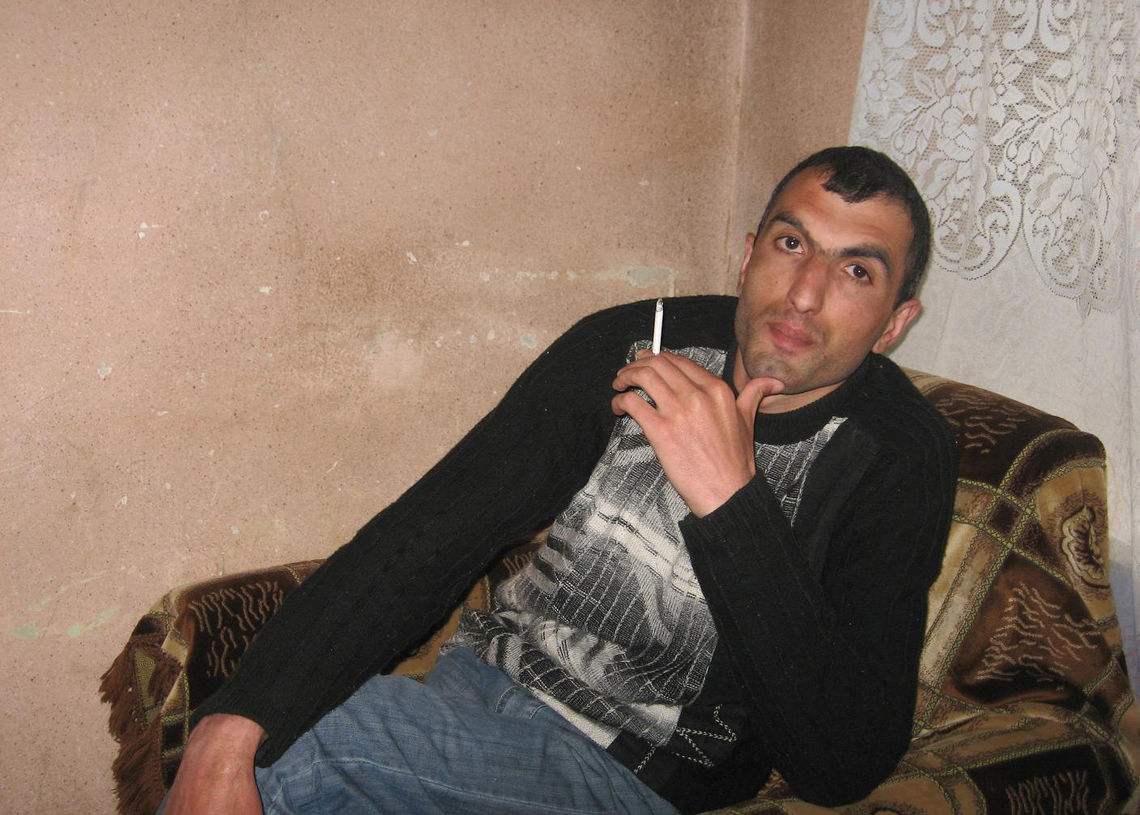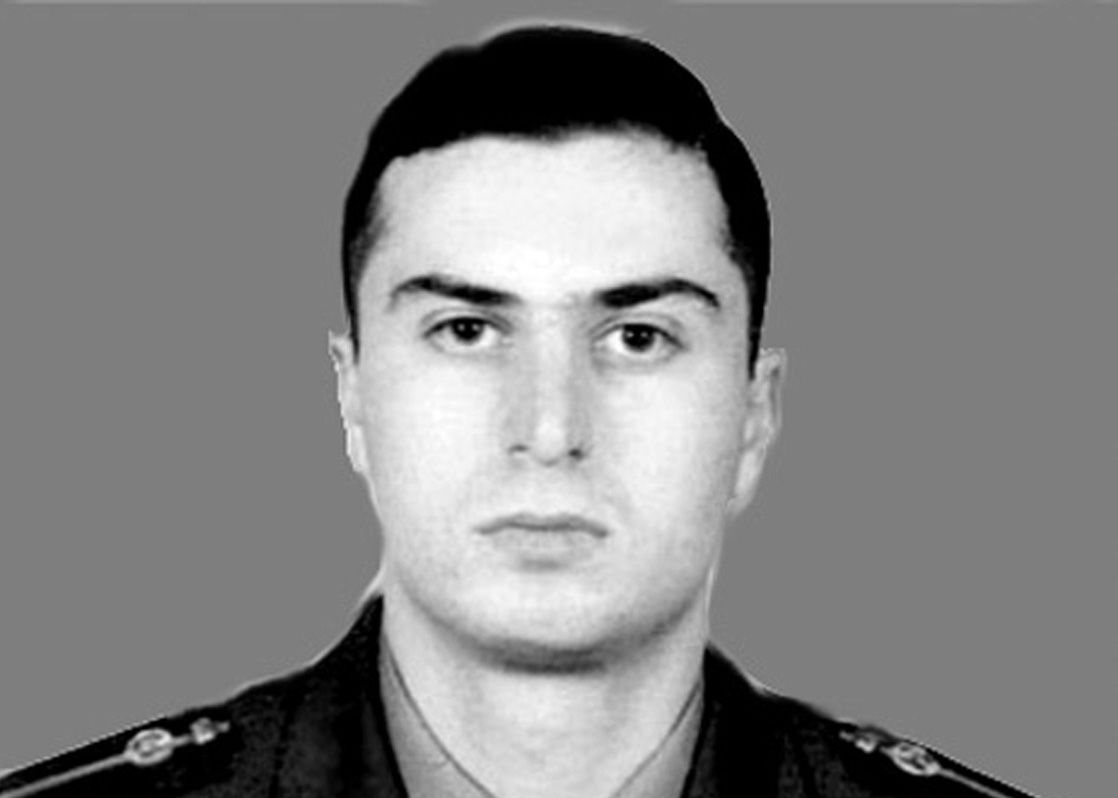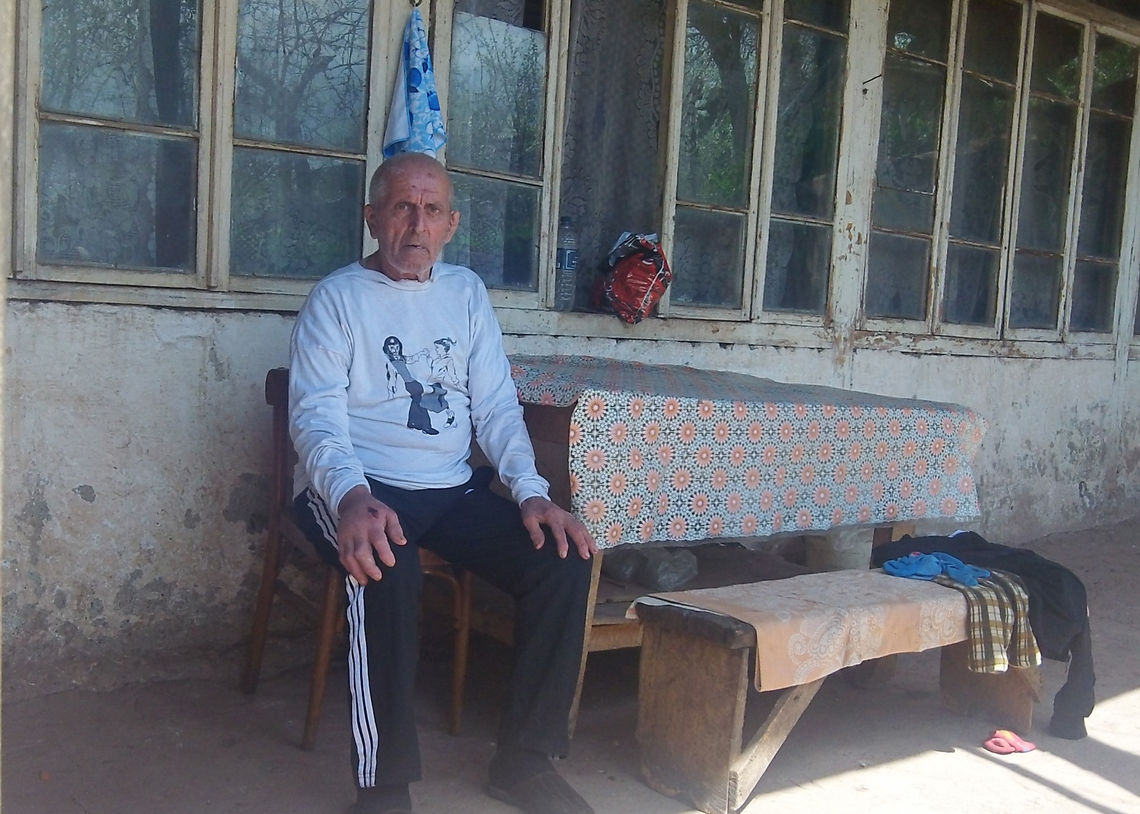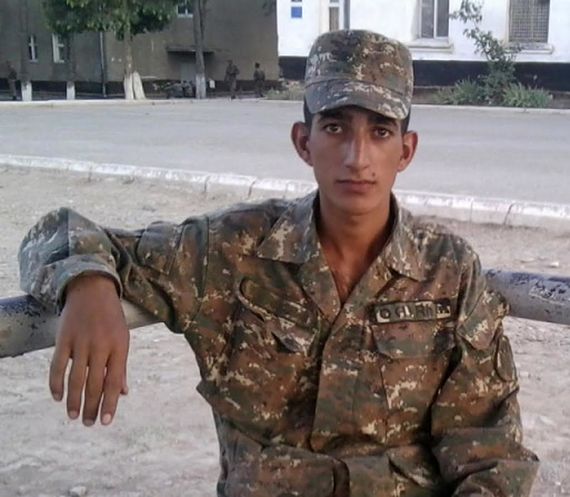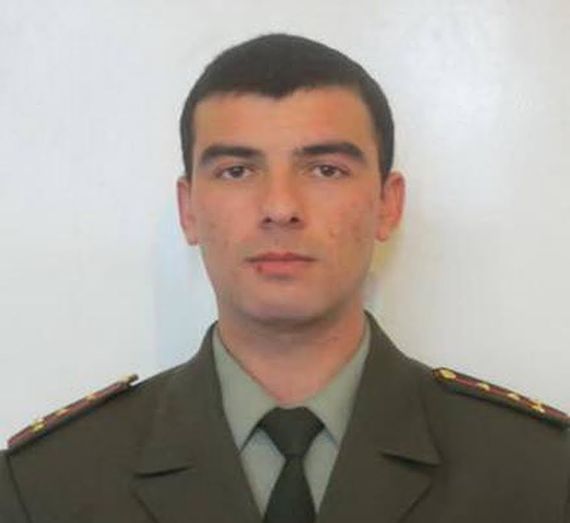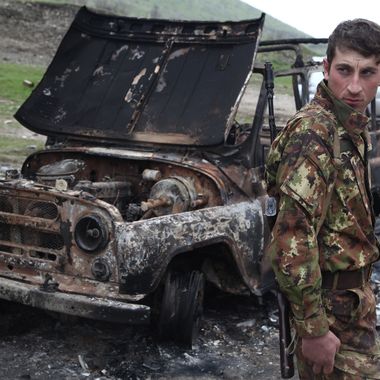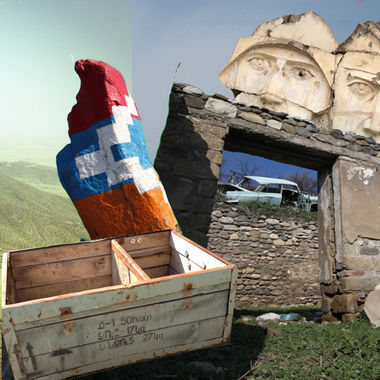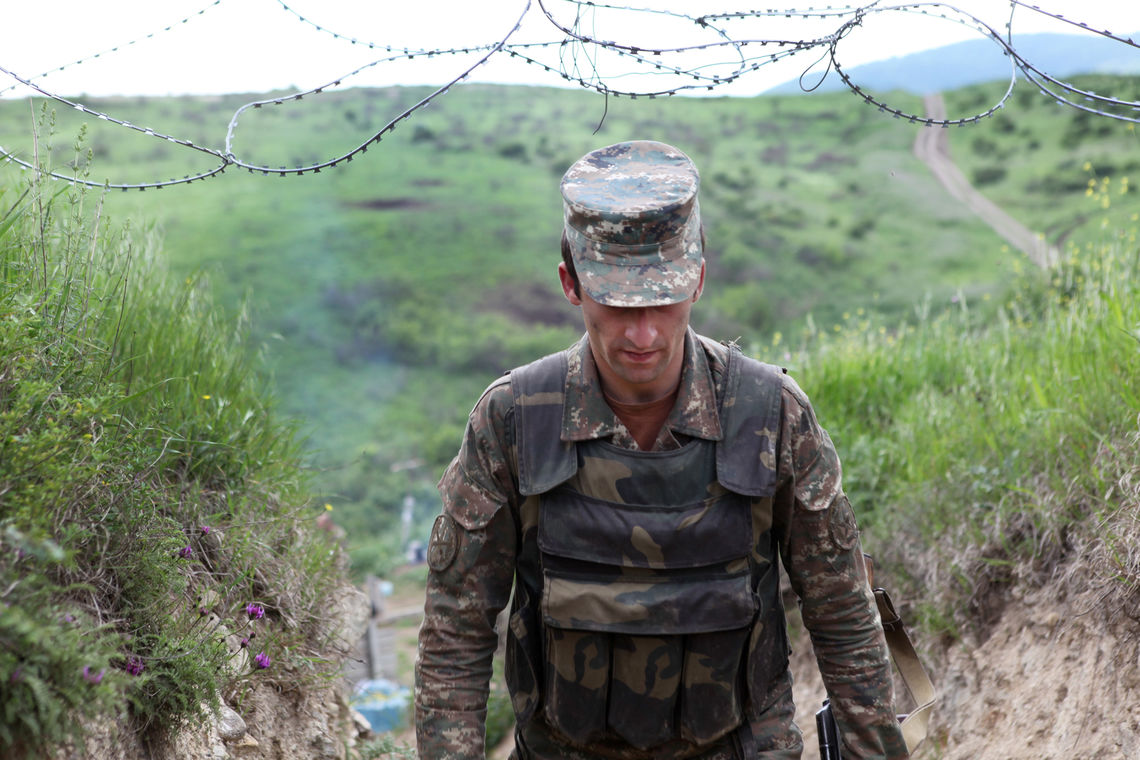
Over the course of the first four days of the war, a number of border villages came under intense Azerbaijani attack. In the early morning hours of April 2 in the village of Talish, Nagorno Karabakh, three elderly members of the Khalapyan family, including 92-year-old Marusya Khalapyan were brutally tortured, mutilated and killed
In the early morning hours of April 2, Azerbaijani armed forces launched a large scale offensive along the entire length of the Karabakh-Azerbaijan Line of Contact according to Nagorno Karabakh’s Defense Ministry. The Azerbaijani Defense Ministry, however, claimed it was the Armenian side that launched the offensive.
This upsurge of violence, the worst since the 1994 ceasefire agreement, came to be known as the Four Day or April War.
During the most intense fighting (April 2- 5), multiple-launch missile systems, heavy artillery, tanks, cluster munitions, attack drones and highly trained special forces were deployed. Azerbaijan was able to seize small but strategically important pieces of territory inside Nagorno Karabakh. There are conflicting reports as to the exact number of military and civilian deaths. At the time, it was reported that up to 200 people on both sides were killed.
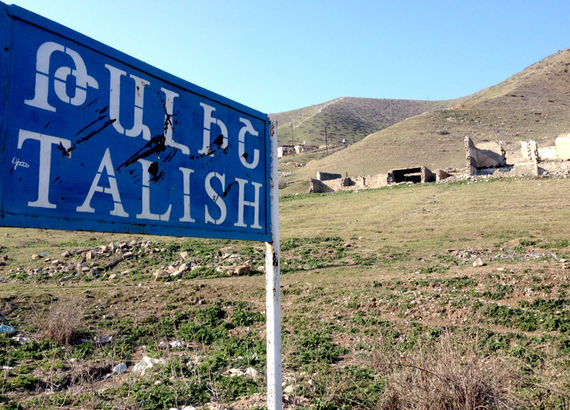
How it Began
At approximately 1:00 a.m. on April 2, initial reports of Azerbaijani military deployments reached the political and military leadership of Nagorno Karabakh. At 2:30 a.m. Azerbaijani Special Forces surrounded the Armenian villages of Talish and Mataghis in the northeast of NKR. Armenian military officials began to evacuate civilians from Talish, Mataghis and Mardakert after learning of the evacuation of Azerbaijani villages near Terter. These Armenian villages are located 3-4 kilometers from the Contact Line. According to some estimates, about 5000 people were evacuated.
From this point on, the conflict spiraled out of control as peaceful settlements came under heavy fire and clashes erupted along the entire length of the LoC.
Official statements from both sides blamed the other for the outbreak of violence.
At approximately 8:30 a.m., an Azerbaijani grad strike near the town of Martuni killed 12-year-old Vagharshak Grigoryan and injured another two children.
On the same day (April 2), in the village of Talish, NKR, three members of the Khalapyan family were killed and mutilated by special Azerbaijani forces.
That same day, three Armenian servicemen were beheaded in the vicinity of Talish.
The hydro power plant in Mataghis which supplied electricity to the border settlements was hit by a missile, leading to a blackout in the district.
Eighteen Armenian servicemen were killed as Azerbaijani forces captured five posts near Lale Tepe. Their bodies remained under Azerbaijani control - when they were repatriated to Armenia through international mediation efforts, they had signs of torture and mutilation.
After mounting international pressure for a cessation in the hostilities, the sides signed a ceasefire on April 6 in Moscow.
The April fighting led to an activation of the peace process. The first meeting after the escalation took place in Vienna on May 16 with the participation of the Minsk Group Co-Chairs and the presidents of Armenia and Azerbaijan. The next meeting took place in June in Saint Petersburg on June 20, with Russian mediation, in the presence of the Russian president Vladimir Putin.
A full chronology of the conflict can be found here and here.
A Pattern of Azerbaijani War Crimes Prior to the April War
The Ombudsman of Artsakh (Nagorno Karabakh) issued an interim report on war crimes committed against Armenian troops and civilians during the Four Day War. A second interim report was issued in December 2016. However, there has been a pattern of Azerbaijani war crimes committed since the end of the Karabakh War in 1994.
The ceasefire regime over the past 23 years has been constantly violated, with both sides exchanging fire resulting in loss of military and civilian lives and non-military property damage to border villages. The violations have not been isolated to the Line of Contact but have also spread to the state border between Armenia proper and Azerbaijan with border villages coming under attack, including civilian targets (schools, homes, community centers).
Despite repeated calls by the OSCE Minsk Group for a halt in hostilities, escalating tensions eventually led to the April War. There have been documented cases of the Azerbaijani military committing war crimes against both military servicemen and villagers over the course of the 23-year-long ceasefire.
Below is a list of those violations.
Case 1: Lt. Gurgen Margaryan
On February 19, 2004, 26-year-old Gurgen Margaryan, a lieutenant in the Armenian Armed Forces was hacked to death in his sleep by Azerbaijani Lieutenant Ramil Safarov in Budapest, Hungary. Both men were participating in a NATO-sponsored English-language training course at the Hungarian University of National Defense within the framework of the “Partnership for Peace” program in the Hungarian capital.
The gruesome murder sent shockwaves across the world for its barbarity. “We suspect Ramil S. of having committed murder with unusual cruelty," Budapest Police Maj. Valter Fulop told reporters. "We say 'unusual cruelty' because beside a number of knife wounds on his chest, the victim's head was practically severed from his body."
Safarov was sentenced to life imprisonment but under questionable circumstances was extradited to Azerbaijan in 2012, where he received a hero’s welcome by both the government and people.
Nato Secretary-General Anders Fogh Rasmussen at the time said the crime "should not be glorified" and was "deeply concerned" by Azerbaijan's decision to release Safarov. "The pardon damages trust and doesn't contribute to the peace process.”
The case was sent to the European Court of Human Rights.
Case 3: Hakob Injighulyan
A conscript in the Armenian Armed Forces, Hakob Injighulyan accidently crossed the Karabakh-Azerbaijan Line of Contact in early August 2013. He was captured by Azerbaijani military forces and held captive there for a year before he was moved to a third country; he was later repatriated to Armenia with the facilitation of the International Committee for the Red Cross.
When Injghulyan was eventually repatriated to Armenia, he said that he gave those interviews under duress. Injighulyan also said that he had been forced to wear an Azerbaijani army uniform and stated “alleged abuse at the hands of his Armenian commanders in his televised appearance.”
Article 13 of the Geneva Convention (III) relative to the Treatment of Prisoners of War (Geneva, 12 August 1949) states:
“Prisoners of war must at all times be humanely treated. Any unlawful act or omission by the Detaining Power causing death or seriously endangering the health of a prisoner of war in its custody is prohibited, and will be regarded as a serious breach of the present Convention. In particular, no prisoner of war may be subjected to physical mutilation or to medical or scientific experiments of any kind which are not justified by the medical, dental or hospital treatment of the prisoner concerned and carried out in his interest.
Likewise, prisoners of war must at all times be protected, particularly against acts of violence or intimidation and against insults and public curiosity.
Measures of reprisal against prisoners of war are prohibited.”
Case 5: Smbat Tsakanyan
Smbat Tsakanyan, a 17-year-old resident of Nagorno Karabakh was kidnapped by members of an Azerbaijani commando group that had infiltrated NKR territory in the Karvachar region. Tsakanyan’s body was found near the village of Manashid in NKR’s Shahumanyan region on July 15, 2014. He had been reported missing on July 8.
According to the NKR Prosecutor’s Office, Tsakanyan was kidnapped by Azerbaijani citizens Shahbaz Jalal Ogli Guliyev and Dilham Gardashkhan Ogli Azkerov and a third member of the commando group.
On July 11, a Niva with civilian plates driven by Major Sargis Abrahamyan (b.1971) takes Karine Davtyan (b.1977), the wife of a local military commander from Vardenis to Karvachar. Around 32 km from Vardenis at about 16:00, between Sotk and Nor Karachinar, they are attacked. Abrahamyan is killed and Davtyan is seriously wounded. In a report about the incident the following day, officials say that an Azerbaijani attacker is also killed.
Case 7: Artur Badalyan
On May 9, 2009, Artur Badalyan, a resident of the town of Haghartsin, went to pick mushrooms with some friends. In the vicinity of the town of Berd, he lost his friends and his way. He inadvertently had crossed the Azerbaijani border and was captured.
After being held in Azerbaijani captivity for 22 months, Badalyan was released on March 17, 2011 in a prisoner exchange deal.
Badalyan told Hetq.am that he was physically and psychologically tortured while in captivity. The forms of torture that he endured included being tied, receiving electric shocks, lack of food and proper medical attention.
In August 2011, his case (Application no. 51295/11) was sent to the ECHR.
Case 2: Manvel Saribekyan
Manvel Saribekyan was a 20-year-old resident of the Armenian border village of Jujur when he was captured by Azerbaijani soldiers in September 2010. “A visibly injured Saribekian was paraded on Azerbaijani television, saying that he is a member of an Armenian commando squad that planned to carry out terrorist attacks in Azerbaijan.” This was a clear violation of international humanitarian law and Article 13 of the Geneva Convention (III) relative to the Treatment of Prisoners of War (Geneva, 12 August 1949).
Shortly thereafter, Saribekyan was found hanged in an Azerbaijani detention center. “The Azerbaijani authorities claimed that he committed suicide. The Armenian government said, however, that Saribekian was tortured to death or driven to suicide. Both the government and Saribekian’s family insisted that the young man was a civilian who accidentally crossed the Armenian-Azerbaijani border while grazing cattle.”
On November 4, 2010, Manvel Saribekyan’s body was returned by the Azerbaijani side to Armenia. There were reports that there were signs of torture on his body.
Manvel Saribekyan’s case was lodged to the ECHR on June 10, 2011 by his parents, Mamikon Saribekyan and Siranush Balyan. The applicants attested that under Article 2 of the Convention, “their son died as a result of torture and intentional killing while in detention. The authorities of Azerbaijan failed to conduct an investigation into the circumstances of his death. They therefore claim that there were breaches of both the substantive and the procedural aspects of Article 2.” They claim that their son was tortured and ill-treated prior to being murdered.
Case 4: Karen Petrosyan
A 31-year-old from the border village of Chinari in northeastern Armenia, Karen Petrosyan, inadvertently crossed the Armenia-Azerbaijan state border and was taken captive by the Azerbaijani army on August 7, 2014. Petrosyan initially wandered into the Azerbaijani border village of Agbulaq, where residents say he asked for some tea. A day later, Petrosyan was dead.
According to Azerbaijani authorities, he had died of heart failure while in detention. According to a report by RFERL, Armenia’s Foreign Ministry condemned his death and “accused Baku of violating international agreements.”
The residents of Agbulag provided video footage of Petrosyan conversing with villagers, who confirmed that he was “unarmed and acted peacefully.” The Defense Ministry of Azerbaijan subsequently claimed that Petrosyan was a spy.
After a complaint was lodged to the European Court of Human Rights by Petrosyan’s parents, requesting intervention under Rule 39 of the Court’s General Rules, the ECHR asked Azerbaijan to explain its “official position” in connection with the repatriation of Petrosyan’s body. (International law requires that the remains be returned without preconditions.)Karen Petrosyan’s body was eventually repatriated through the efforts of Armenia’s State Commission on Prisoners of War, Hostages and Missing People and the RA Defense Ministry, facilitated by the International Committee of the Red Cross in Bala Jafarli village of the Gazakh region on October 10, 2014.
Case 6: Mamikon Khojoyan
On January 28, 2014, 77-year-old Mamikon Khojoyan accidentally crossed the Armenia-Azerbaijan state border and was captured by the Azerbaijani military. He had told his family that he was going to collect grapes. The state border in the region is not marked. Khojoyan was held captive for a month, tortured and later repatriated to Armenia through the efforts of the International Committee of the Red Cross on March 4, 2014. Khojoyan had multiple traces of torture on his body. Artsrun Hovhannisyan, the spokesperson for the Armenia Defense Ministry said that the elderly villager had a broken hand, a gunshot wound and multiple bruises all over his body.
Azerbaijani authorities claimed that he was part of an Armenian sabotage group. After his repatriation, his children visited him in hospital where they say that he was incoherent and frightened. “He told them he had been taken to Baku, where he had been beaten, forced to sleep on a concrete floor, had salt poured into his wounds, received injections and had his head burned with incandescent metal. A forensic examination showed traces of petroleum and psychotropic (perception-altering) drugs in his blood and urine. Mr Khojoyan died in his home on 20 May 2014, six weeks after he was discharged from the hospital.”
Khojoyan’s case was submitted to the ECHR (Application no. 62161/14) in 2014.
Azerbaijani War Crimes Committed During the April War
Over the course of the first four days of the war, a number of border villages came under intense Azerbaijani attack. In the early morning hours of April 2 in the village of Talish, Nagorno Karabakh, three elderly members of the Khalapyan family, including 92-year-old Marusya Khalapyan were brutally tortured, mutilated and killed.
Three servicemen, Hrant Gharibyan, Hayk Toroyan and Kyaram Sloyan were beheaded by Azerbaijani military in the vicinity of Talish; photos of Azerbaijani soldiers posing with the head of Private Kyaram Sloyan were shared on social networks. Their cases have been submitted to the European Court of Human Rights.
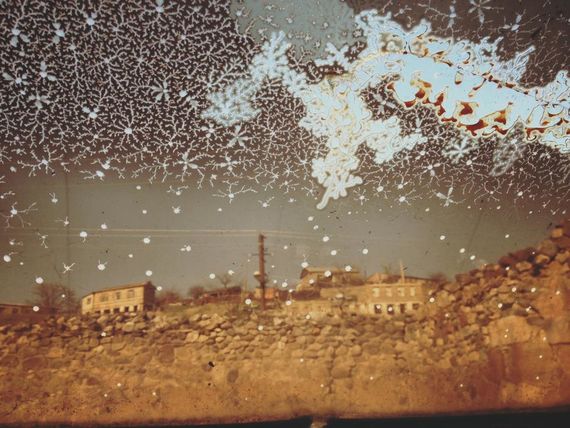
Case 1: Kyaram Sloyan
On April 2, 2016 Kyaram Sloyan was on duty service in the NKR Defense Army in a military position close to the village of Talish and the town of Martakert. At approximately 3 a.m., Sloyan’s military position came under intense and continuous artillery bombardment by Azerbaijani troops, as well as attacks by tanks and hundreds of Azerbaijani soldiers. On this same day, the military position was captured, a fact later confirmed by the Ministry of Defense of Azerbaijan. Later, the NKR Defense Army troops were able to retake this position, where the corpse of Kyaram Sloyan was discovered. The corpse however was beheaded, while the head had been taken by Azerbaijani troops.
The photos of Kyaram Sloyan’s head were largely disseminated through social media, showing an Azerbaijani man in uniform posing with the head of Sloyan. The head was transferred to Azerbaijani villages to demonstrate it as a “war trophy.”
On April 8, 2016, the head of the deceased was returned by Azerbaijani authorities to NKR authorities under the auspices of ICRC and OSCE procedures.
Case 3: Hrant Gharibyan
Hrant Gharibyan was an army Private and driver of ammunition trucks for the NKR Defense Army. At approximately noon on April 2, 2016 he was conducting a supply run to the command post “Ani” located 2 km to the north of the village of Talish on the northeastern border, a position that came under attack by Azerbaijani armed forces. He was accompanied by Hayk Toroyan, a Major of the NKR Defense army. On their way to their military positions, about 500 meters to the north of Talish, the truck came under heavy fire. Hrant Gharibyan was shot dead and later beheaded upon the arrival of Azerbaijani forces to their destroyed truck. The decapitated corpse of Hrant Gharibyan was found in the evening of April 2, 2016, approximately 5-10 meters away from the truck. To date, the head has not been returned to NKR authorities and his family.
The bodies of 18 Armenian servicemen that were repatriated with the facilitation of the International Committee of the Red Cross and the Personal Representative of the OSCE Chairperson-in-Office had signs of torture and mutilation. A video on YouTube (by Samsaddin Hasanov) uploaded on April 27, 2010, shows the body of an Armenian serviceman. Voices, speaking in Azerbaijani can be heard. One of the voices requests a knife to cut the ears off of the Armenian soldier; he discovers that the left ear of deceased has already been cut off.
(The original version of the video had been copied and later was stored on the Internet with limited access by the Office of NKR Ombudsman. The link is available in the restricted edition only.)
Case 2: Hayk Toroyan
Hayk Toroyan was a Major of the NKR Defense Army. At approximately noon on April 2, 2016, he was to deliver supplies to the command post “Ani” located 2 km to the north of the village of Talish at the Northeastern border of NKR. During this supply delivery, this border position came under attack by Azerbaijani armed forces. Toroyan was accompanied by his driver, Private Hrant Gharibyan, during this supply run. On their way to the military position, at around 500 meters to the north of Talish, the truck came under heavy fire. As a result, Hayk Toroyan was seriously wounded. According to medical reports, Hayk Toroyan’s wrists were cut off while he was still alive, followed by a decapitation. The decapitated body was found the next day, on April 3, 2016 in the morning around 30 meters from the truck in a moat in a nearby canyon towards Talish. To this date, the head has not been returned to NKR authorities and his family.
The Khalapyan Family
Photojournalist Hakob Poghosyan of Hetq (www.hetq.am) was in the village of Talish, NKR on April 3. The village had temporarily fallen under Azerbaijani control. Poghosyan arrived after it was recaptured by Armenian armed forces. Poghosyan had been advised that when the village was evacuated in the early morning hours of April 2, an elderly family had been left behind. He recalled that when he entered Talish at approximately 2 p.m., there were no signs of any human activity. “It was completely empty. We drove through Talish peacefully,” he said and added that he saw bodies of Azerbaijani soldiers in the village. After several hours, Poghosyan found the elderly family - Valera Khalapyan, Razmela Khalapyan and and 92-year-old Marousya Khalapyan.
According to Poghosyan, when he saw the Khalapyan’s house there were empty shells on the ground and the front door was broken. “I... saw an elderly man sitting on a chair with a walking stick still near his hand…I took photos immediately. I took photos and then took just a step further and saw on the floor, the woman… I came closer and reached an angle to take the photo…I usually don’t like to take photos like this because, you know, so I make another turn in the room and see a couch, on the couch an old woman, in her nineties, laying down. They had killed all three of them. Also, they had cut the ears off of the woman and the man…so, that’s it. I took the photos…”
Children Killed and Wounded
At approximately 8:30 am on April 2, 2016, Vagharshak Grigoryan (born 2004) was killed on his way to school as a result of shelling near the positions of the Karabakh Defense Army in the Martuni region. Two other children (Gevorg Grigoryan, 12, Vagharshak’s twin brother and 11-year-old Vardan Andreasyan) were also wounded in that attack. Vaghinak Grigoryan lived in the village of Zoravan, Nagorno Karabakh. His father was a serviceman in the Nagorno Karabakh Defense Army. The child’s funeral took place on April 4.
Targeting of peaceful civilian settlements
Several towns and villages in Nagorno Karabakh came under intense shelling - Talish, Martakert, Mataghis, and Nerkin Horatagh.
In the early morning hours of April 2, Armenian officials evacuated residents of Talish, Mataghis and Mardakert (located about 3-4 kilometers from the Karabakh-Azerbaijan Line of Contact). Approximately 5000 civilians in total were evacuated. According to the Ombudsman of Karabakh, “the targeted shelling killed or wounded over two dozen civilians from Martakert, Martuni, Askeran and other settlements.”
Reports of civilian casualties, the targeting of civilian settlements (including schools) are unlawful attacks that both sides accuse the other of. The UN Commissioner for Human Rights, Zeid Ra’ad Al Hussein, in a speech on June 13, 2016 referred to the situation in NKR to the UN Human Rights Council.
According to the Foreign Ministry of Azerbaijan, civilian installations, including private homes, electric poles, water and gas pipes, schools and hospitals were damaged as a result of the attacks. Both sides reported civilian casualties and injuries that included children as well.
The Hydro-Electric Power Station (a non-military installation) in Mataghis is bombed at approximately 3:30 am on April 2 leading to a black-out. The power station supplied electricity to civilians.
Hate Speech, Incitement to Violence
Announcements made by public officials in Azerbaijan and media reports in Azerbaijani press over the course of the past two decades are clear evidence of hate speech and incitement to hatred of the Armenians. A number of Human Rights Treaties including the International Covenant on Civil and Political Rights (ICCPR), not only permit states to prohibit hate speech but actually require them to do so.
Article 20 of the ICCPR adopted by the UN on 16 December 1966 and entered into force on 23 March 1976 states: “Any advocacy of national, racial or religious hatred that constitutes incitement to discrimination, hostility or violence shall be prohibited by law.”
Hate speech directed toward Armenians are used in Azerbaijani textbooks, starting from the 5th grade onwards. Research done by conflict specialist Arif Yunusov cited in “Armenophobia in Azerbaijan” by A. Adibekyan and A. Alibegova and further corroborated by research (and surveys) conducted by Anahit Hakobyan in her study “State Propaganda through Public Education: Armenia and Azerbaijan” shows that hatred toward Armenians is nurtured in Azerbaijan from a young age through a concerted state policy.
In Azerbaijan, unlike the case of Armenian history textbooks, the image of Armenia and Armenians appears from the fifth grade, which is the first year of national history instruction. First appearing in the fifth grade the image of Armenians develops in each year textbook and reaches its culmination in the eleventh and last year textbook.
Related
Nagorno Karabakh: The Four Day War
By Simone Zoppellaro
Writer and photojournalist Simone Zoppellaro writes that the moral and political responsibility of a conflict doesn’t rest solely on the actors, or those who arm them. It rests also on the nations that would have the power to intervene and stop the hostilities but prefer to keep themselves detached or indifferent.
Returning From the Line
By Anna Astvatsaturian Turcotte
What is it like to find yourself on a heavily militarized contact line? How does it feel to see an adversary, a mere 400 meters away, who was the reason you became a refugee? Anna Astvatsaturian Turcotte, a refugee from Baku, writes about her emotional journey to the line and back.
Armenia, Azerbaijan and the War on Information
By Samvel Martirosyan
Security expert Samvel Martirosyan writes that Armenia and Azerbaijan are not only waging war on the battlefield but in the media, through social networks, on academic platforms - all platforms where it is possible to disseminate information and propaganda.


